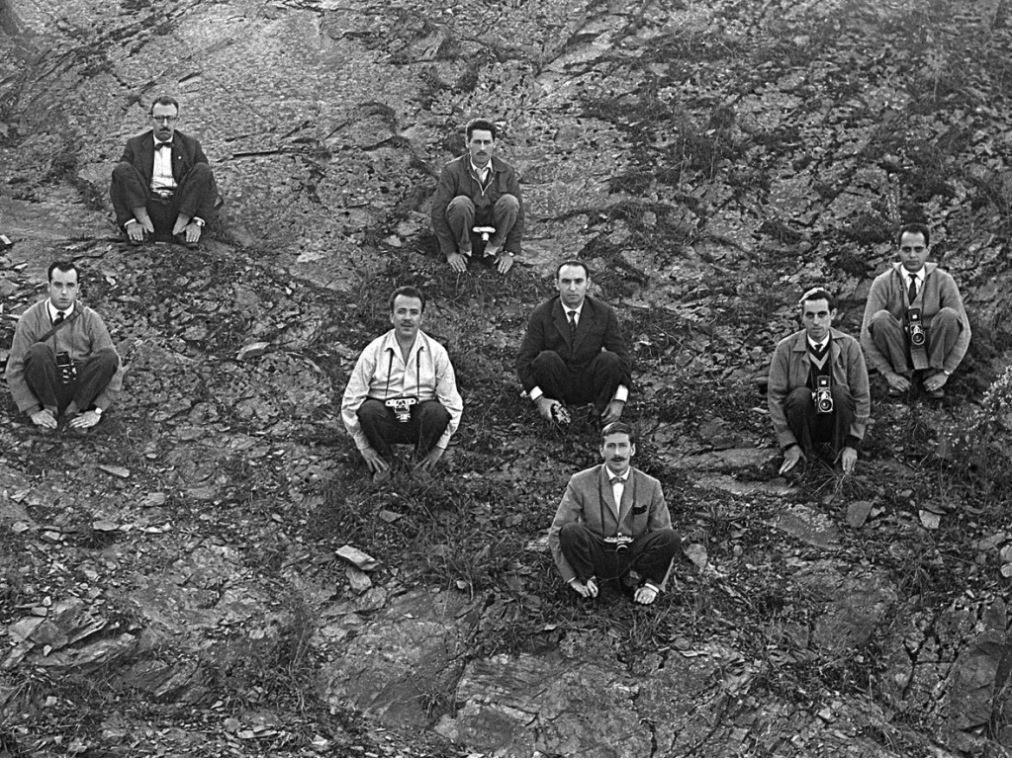The eight members of the group El Mussol. Les Planes
El Mussol ("little owl") was a group of eight photography enthusiasts that came together during the early 1960s, half-way between Terrassa and Barcelona. Antoni Boada and Josep Maria Albero are the two only members alive of the group. Albero, still in full activity. He has explained us how "El Mussol" group was born and about their experiences as a group.
Josep M Albero, Antoni Boada and Josep Bros, were three young men from Terrassa, later joined by Jordi Vilaseca, who shared a great enthusiasm for photography. In 1958 they held their first collective exhibition. Encouraged by its success they held another in 1960 at the Terrassa social centre, which they also exhibited at the Royal Photographic Society in Madrid and then at the Aixelà gallery in Barcelona. As a result of this, Josep Maria Casademont, the director of the Aixelà gallery in the Rambla de Catalunya in Barcelona, and a great promoter of photography at that time, made contact with the other young Barcelona photographers, Joan Colom, Jordi Munt, Ignasi Marroyo and Enric Garcia Pedret. Thus began a very promising relationship, with meetings and the exchange of knowledge and ideas, that would lead to their first exhibition as a group at the Aixelà gallery in 1960, with each of them exhibiting ten of their photographs.
They chose the name El Mussol because, as they explained, the little eagle is a bird that observes every detail from a great height with its open eyes and fixed gaze, a good symbol to represent the gaze of a photographer.
It is true that photography is an individual activity, but it is also true that photographers often feel the need to share their ideas and projects with colleagues who both understand and inspire. That was the case with these young photographers who would meet on Sunday mornings at a café in Les Planes, half way between their respective places of residence. Over breakfast they would show their photographs, black and white ones of course, which they had developed in their own darkrooms. They would discuss them critically and even rip up the ones which they thought were no good. Josep Maria Albero tells us that the group photograph below was taken at the side of the railway station in Les Planes with a camera on a tripod placed on the railway track.
In 1962 Casademont, always keen to encourage photographic groups' creativity, proposed a collective endeavour. The idea was for each member of the group to photograph the same event, each in their own way. They chose the Sitges rally, which they attended by train, car and scooter. Later they decided collectively on which of the photographs to exhibit at the Aixelà gallery.
El Mussol never held another collective exhibition although its members always mentioned their membership of the group in their individual exhibitions. Some of the group's members, Colom, Albero and Marroyo, were active members of the highly prestigious Asociación Fotográfica de Almería, AFAL.

Members of El Mussol having breakfast in Les Planes. 1963 Photo: Josep M Albero
From 1965 onwards the meetings in Les Planes were less frequent because all of them had work and family responsibilities that demanded their attention. They were all photography enthusiasts, but they earned their living with other occupations. Only Marroyo devoted himself professionally to photography from his studio in Rubí, and that was much later, in the early 1970s. He and Colom would sometimes work together for magazines and the illustrated press, amongst them the Correo Catalan. The last meetings were held in 1980.
Most of the group's members showed a clear preference for documentary photography, which they attempted to renovate by spurning the widespread pictorial assumptions of the day, or "salonisme" as it was then called. The streets of the city's outlying districts, popular festivals, Easter processions, sports fields and markets provided some of their preferred subject matter.
In a newspaper interview at the time, reprinted in Revista Fotogràfica AFAL No. 361, they declared, "We do not defend the abstract or impressionism. We are passionate about the concrete, the definite and we devote ourselves to that body and soul".
Another interesting interview is the one by Jordi Ribalta with Albero, Boada and Marroyo for the catalogue, Jo Faig el Carrer, published on the occasion of Joan Colom's retrospective exhibition at the MNAC in 2013, in which they describe their experiences and way of understanding photography in detail.2
At this magnificent exhibition there was a room devoted to El Mussol, who were in attendance at its opening, and a whole chapter of the catalogue was also devoted to them. Despite its short existence El Mussol left its mark on the photography of the second half of the 20th century at a time when other forward-looking photographic associations were also flourishing, such as the AFAL in Almeria, mentioned above, and the Madrid group called La Palangana.
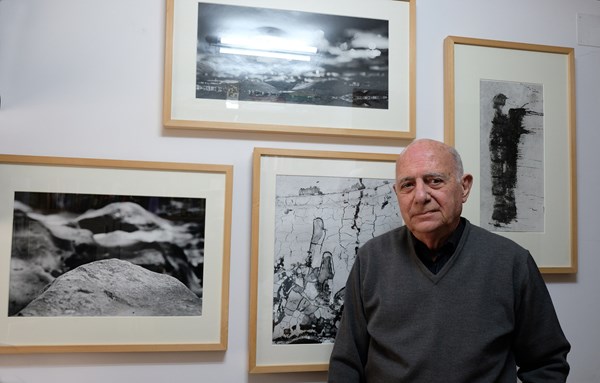
Josep Maria Albero 2017 Photo: Josep M Cortina
Josep Maria Albero's interest in photography started as a member of the Photography Group at the Comerç social centre in Terrassa. He later went on to be one of Terrassa's founding members of El Mussol, and today he is its only surviving member, somewhat strangely for, as he says in the interview already mentioned, "I was a case apart". He says he was interested in documentary photography because at that time it was an innovative branch to explore and because that was the sort of photography his colleagues were involved in and, to a certain extent, they took him along with them on their sorties. But, after starting off well like this, his style and his way of thinking about photography began to change and he became very clearly interested in non-figurative photography, with leanings towards abstraction, and he would photograph textures, reflections in water and all kinds of surfaces which, through his photographic art, he would transform into unreal scenes and landscapes.
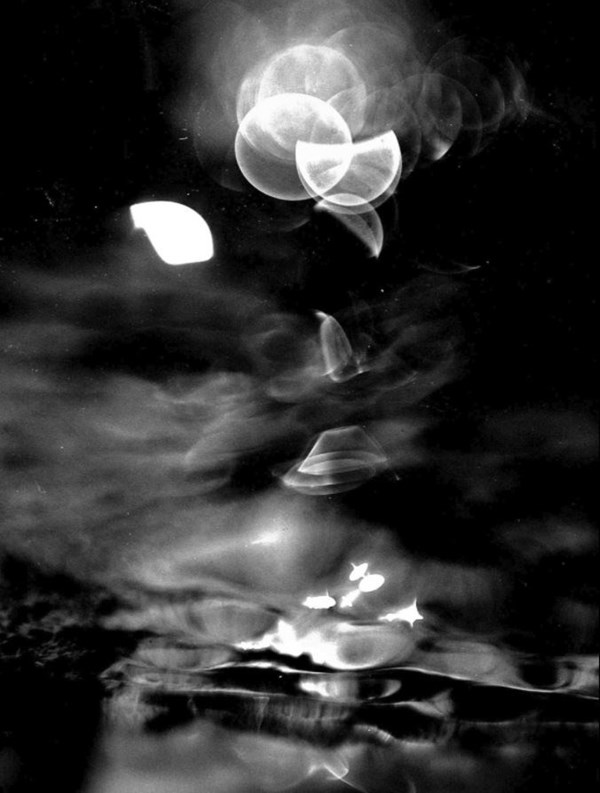
Visió 81 1967 Photo: Josep Maria Albero
Albero considers his maestro to be the German photographer Otto Steinert, an exponent of subjective photography. "When one of his books fell into my hands I saw clearly that this was the sort of photography that I wanted to do. Steinert had a big influence on me."
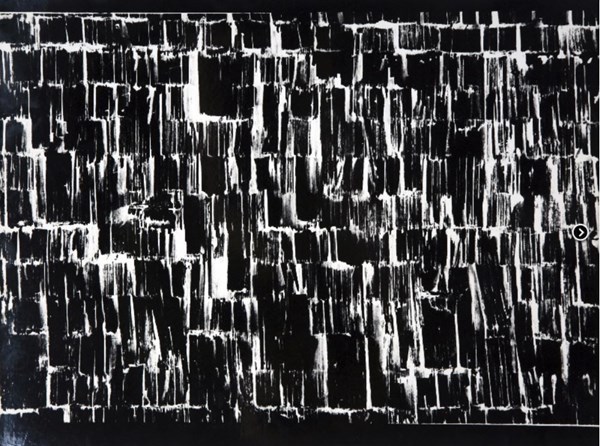
Schindeln. Schwarzwald 1956. Photo: Otto Steinert
The theoretical postulations of the Fotoform group, founded by Steinert, were clearly different from what might be called reproductive photography, which has a practical sense that focuses on faithfully representing the appearance of the object. Subjective photography, on the contrary, attempts to be free and creative, transcending the object and renouncing the reproduction of reality to delve instead into the field of absolute creativity. This is the spirit of Albero's work and he says that around 90% of it conforms to this aesthetic and conceptual framework.
With regard to the equipment used, at first he had an Isoflex camera, then a Minolta and finally a Rolleiflex, which became his camera par excellence and the one he would use to produce the major part of his work. The Rolleiflex, with its superior viewfinder, made it possible to put the camera sometimes in hidden places in order to obtain images that the eye could not see. Furthermore, he could use a slow macro, something essential for photographing the details and textures that a conventional lens would not be able to capture.
Albero was an early adopter once the digital age had arrived and, while he feels great nostalgia for his Rolleiflex, he now uses a compact Olympus and a Canon reflex, although he admits that he now takes fewer photographs than before.
Although he has taken colour photographs, Albero is basically a black and white photographer. He says he has always felt the difficulty, so widely shared by many photographers, of not being able to finish the photographic process with developing and printing in his own darkroom. The necessity of having his films developed by an external laboratory meant that he was never satisfied with the resulting colours, since they did not correspond to what he had seen and wished to reproduce. In this respect slides produced better results than colour negatives, but he always went back, again and again, to black and white in his search for fidelity to what he had seen. Despite his reservations, his colour photographs are splendid, as can be seen by those in the Fotografia a Catalunya catalogue.
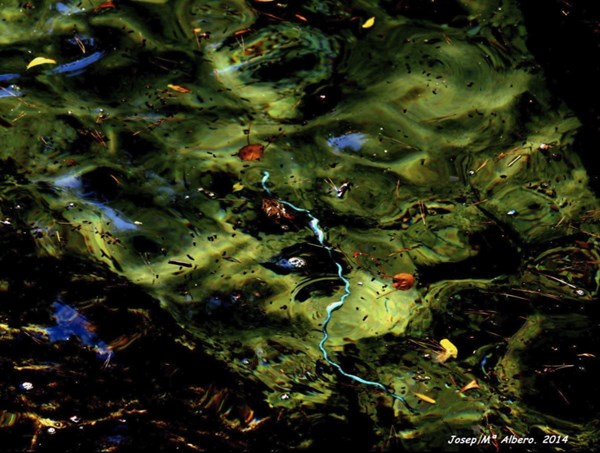
Visió 111. Photo: Josep M Albero
Albero's career as a photographer is that of an amateur, albeit a very advanced one, who has achieved a level of excellence belied by the fact that he never embraced a career as a professional. He has held numerous individual exhibitions and has taken part in other collective ones. His work has been published in many media including the magazines Destino, Presència, Ikonos, Arte Fotográfico, Imagen and Sonido, and he has been awarded numerous prizes, perhaps the most outstanding of which was the First NEGTOR Prize of 1962, which he won in competition with such well-renowned photographers as Oriol Maspons, Alberto Schommer, Gabriel Cualladó and Julio Ubiña, amongst others.
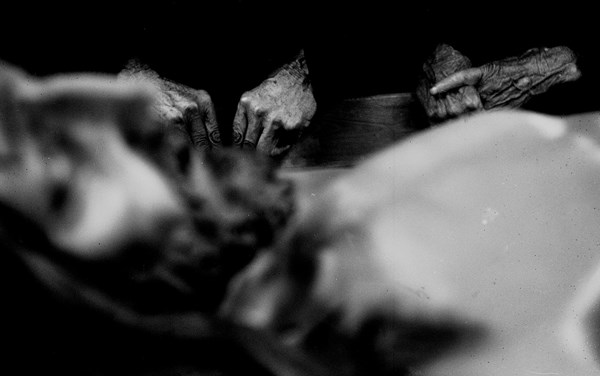
Kyrie Elesion. NEGTOR Photo Prize 1962 Photo: Josep Maria Albero
At the present time he is the Honourary President of Foto Club Terrassa and, early in 2018 he will have two exhibitions at the Soler i Palet library, one, Esclat, with 35 documentary-style black and white photographs, and the other, Il·lusions, with 35 non-figurative colour photographs.
Josep Maria Cortina
Two interesting exhibitions restore the figure of Josep Maria Albero these day, offering to us the opportunity to admire his work in first person:
"Josep M. Albero: Batecs ". From the 13/01/2018 until 30/01/2018.
"Josep M. Albero: Il·lusions ". From the 03/02/2018 until 17/02/2018.
Both at Casa Soler i Palet de Terrassa.
WORKS OF JOSEP Mª ALBERO BOTELLA
Notes:
1Balcells, D and Ribalta, J: Jo faig el carrer. Joan Colom Fotografies 1957-2010. Published by MNAC, 2014.
2AFAL FotoCine magazine, No. 36. May-December 1962
